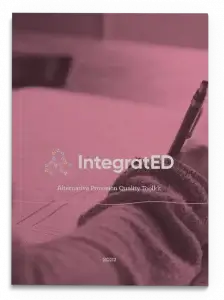 Every year thousands of pupils find themselves in alternative provision (AP). In 2021, there were at least 32,083 pupils educated across at least 761 alternative provision settings and yet alternative provision continues to be a part of the education system that most know little about.
Every year thousands of pupils find themselves in alternative provision (AP). In 2021, there were at least 32,083 pupils educated across at least 761 alternative provision settings and yet alternative provision continues to be a part of the education system that most know little about.
AP supports and educates pupils who have been excluded from school, are at risk of exclusion or for another reason require an alternative form of education. These pupils include those with social, emotional and mental health needs, and those who have encountered adverse childhood experiences (ACEs) that have impacted their ability to succeed in mainstream school environments.
Pupils in AP are amongst those with the highest levels of need and most significant vulnerabilities in the country. 81% of pupils in alternative provision (AP) are on the SEND (special educational needs and disability) register, which is almost six times more than in mainstream schools. Almost half (47%) of pupils in AP are eligible for free school meals (FSM) compared to 13.6% of their mainstream peers. The significant scale and extent of pupils’ needs in the AP sector has also been compounded by disruption to learning and support caused by the coronavirus pandemic.
In alternative provision settings across the country there is some fantastic work being done. But there are also vast inconsistencies in AP practice and performance and several cold spots, where pupils have a poor-to-zero chance of receiving a quality education. There are also significant data and evidence gaps which impede efforts to truly understand current practice and make meaningful and sustainable system improvement.
When discussing alternative provision, it is important to understand the uniqueness of the AP sector and how AP schools and providers operate. AP schools and providers often perform different functions and roles within local education eco-systems. For example, many offer long term placements, others focus on short-term placements designed to prepare pupils to return to mainstream education and some provide outreach services to mainstream schools to help to pupils to stay in school. Most AP settings fulfil a combination of functions and adapt their provision to needs as they arise in their area.
When pupils start and leave AP is also unique. Typically, pupils do not start in year 7 and finish their studies in year 11, instead pupils can move into AP settings at any age and at any point in the year (not just September). Similarly, some pupils move back out of AP before the end of year 11, often transitioning back to mainstream schools or to specialist settings. AP schools and providers also have differing budgets, instable funding and variances in local support services available to them.
The complexity of pupil need combined with the nuanced way in which AP schools and providers operate mean that traditional frameworks and barometers such as those used to evaluate quality and measure success in mainstream education are insufficient when applied in AP contexts.
The recent SEND and AP Review published by the government stated, ‘The information we currently publish in ‘Compare School and College Performance’ does not include alternative provision schools and existing measures of performance do not account for the progress which can be made in a short time by this fluid cohort or the success of providers in reintegrating the children and young people back into mainstream schools.’
At the CSJ we have been involved in AP research since 2018 and two years ago as part of the IntegratED programme we set out on a mission to answer the question: ‘What are the characteristics of good quality alternative provision?
During this project we worked extensively with the AP sector, explored a variety of approaches to evaluating and improving AP quality, sought out examples of good practice and ran pilots in 5 areas of the country (Blackpool, Tameside, Sheffield, Gloucestershire and Plymouth).
Our findings and recommendations have been recently published in the form of the AP Quality Toolkit. This report represents the most viable and comprehensive approach ever developed to evaluate and improve AP quality.
The foreword has been co-signed by Mark Vickers MBE, Cath Kitchen OBE, Robert Gasson, Sarah Johnson, Tim Morfin and Janice Cahill OBE and this evidence-based approach has been endorsed by over 100 organisations/individuals working in and around the AP sector, including 10 Multi-Academy Trusts, 11 local councils and 47 AP settings.
The toolkit identifies 13 quality areas. The 13 quality areas (which are separated into the three categories – community, curriculum and currency) include all the important aspects of AP that impact upon pupils’ experience, education and outcomes.
The recommendation of ‘Implementing the AP Quality Toolkit’ is aimed towards the DfE, Ofsted, local authorities, AP schools and providers, commissioners of AP and mainstream schools who have in-school AP.
Through implementation of the AP Quality Toolkit policymakers, local authorities and AP leaders can work based on a shared consensus of the characteristics of good quality AP and can develop strategies which lead to genuine and sustainable improvements for pupils.
The toolkit provides a comprehensive framework, shared understanding and common vocabulary for AP quality at national, local and individual levels. We believe that the AP Quality Toolkit has the power to transform the way AP quality is understood, evaluated and improved and should be adopted by all stakeholders.

